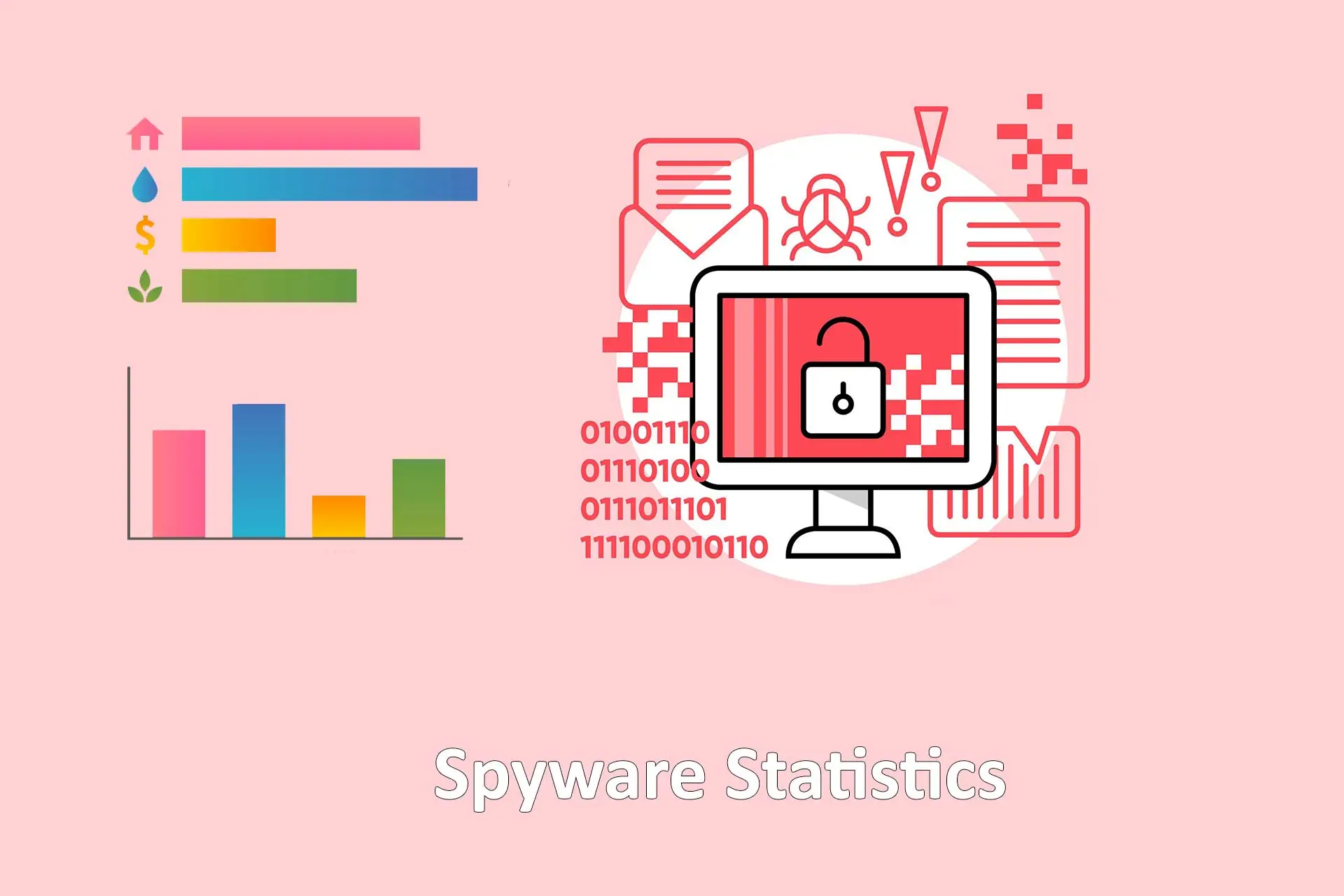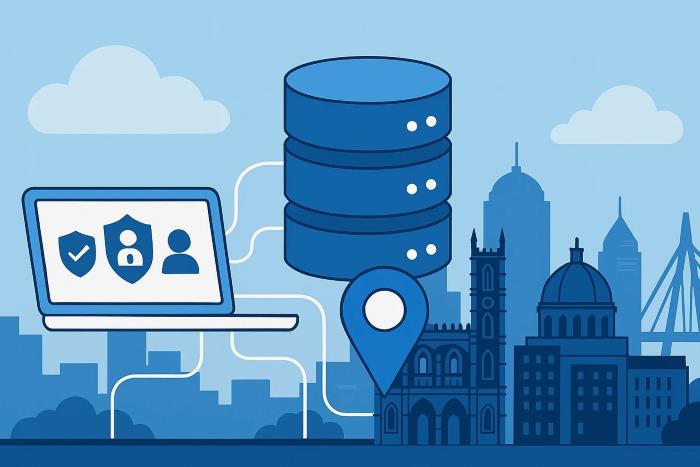10+ Alarming Spyware Statistics to Know in 2025
5 min. read
Updated on
Read our disclosure page to find out how can you help VPNCentral sustain the editorial team Read more

Spyware statistics point to a sweeping crisis worldwide, with an annual rise in data breaches and cyberattacks.
Accordingly, with technology rooted in our everyday lives, users must employ safe online behavior to avoid becoming a target of such crimes.
The following article provides precise and up-to-date statistics from reliable sources to inform you of the latest technological advancements and the severity of spyware attacks.
Worrying spyware statistics
Spyware and malware attacks can lead to significant security breaches and permanently damage the infected party.
Here are some of the most worrying spyware statistics collected by 2023:
- Almost 80% of all internet users have their systems affected by spyware.
- Business malware detections rose 79% due to increased backdoors, miners, spyware, and data stealers.
- Small organizations have been heavily impacted, with spyware causing 40% of all security downtime costs.
- 86% of adults are unaware of spyware or have merely heard the name.
- 54% of all malware and spyware infections are on Windows.
- Microsoft had over 660 dangerous security gaps, and 357 of them were related to Windows 10.
- Hackers compromise an average of 2,500 websites every week.
General spyware statistics
The impact of spyware and malware is broad and affects regular users, businesses, and governments.
Here are some alarming spyware stats and facts to put the issue into perspective:
1. Almost 80% of all online users have their systems affected by spyware
(Source: eftsure)
And even more worrisome, 89% of them aren’t aware of that. Their computers get infected mainly through emails or insecure websites.
2. Antivirus software and firewalls fail to detect 80% of keyloggers
(Source: Ctelecoms)
Keyloggers are a type of spyware that monitors and tracks your keystrokes without your knowledge.
Unfortunately, they’re also extremely hard to detect and remove, with antivirus software and firewalls failing to catch over 80% of them.
3. 48% of all mobile phone malware is adware
(Source: DataProt)
Adware is a type of malicious software that tracks your online activity to spam you with ads.
And according to the statistics, 48% of all mobile malware fall into this category.
4. Business malware detections rose 79% due to increased backdoors, miners, spyware, and data stealers
(Source: eftsure)
The number of malware attacks has drastically grown between 2008 and 2019, rising from 12.4 million to 812.67 million yearly.
Additionally, spyware infections are adapting to the ever-evolving technology, becoming more sophisticated and challenging to detect.
5. Spyware is causing 40% of all security downtime costs for small organizations
(Source: eftsure)
Small and medium-sized enterprises are too familiar with the costs of downtime caused by malware and spyware security breaches.
According to the statistics, spyware and malware are responsible for 40% of all security downtimes and it keeps getting worse over time.
Spyware statistics by operating system
Spyware and malware attacks target servers and resources with security gaps and vulnerabilities.
Here are some spyware statistics by operating system:
6. Only 6.2% of malware infections in 2022 were on macOS devices
(Source: Elastic Security Labs)
Based on a 2022 cybersecurity report, macOS remains at the bottom of the list with the lowest number of security threats.
Accordingly, only 6.2% of all malware and spyware infections were found on macOS, indicating how secure Apple’s operating system is.
7. A 7.2% year-on-year increase in Android spyware app detection was recorded in 2021.
(Source: Malwarebytes)
However, even though the numbers are up, there’s still a noticeable downtrend in spyware detection from the peak of 2020, seen during the lockdowns at the start of the COVID-19 pandemic.
8. Windows computers were targets of 83% of all malware attacks in Q1 2020
(Source: AV Test)
AV Test indicates that Windows devices are the most vulnerable to cyberattacks.
Accordingly, Windows-operated devices made up 83% of all the targets of malware attacks in Q1 2020.
9. Linux malware rates increased by 50% in 2022
(Source: Atlas VPN)
According to data from Atlas VPN, new Linux cyber threats hit record numbers in 2022, growing by 50% to 1.9 million.
Most new Linux spyware samples were in the Q1 of 2022, while in the second quarter, the numbers dropped by 3%.
Computer spyware statistics in companies
Spyware threats affect users differently depending on a company’s country, size, and industry.
Here are some computer spyware statistics in companies:
10. A data breach in the US costs over twice the global average
(Source: IBM)
Based on IBM statistics from 2022, 83% of companies encounter at least one data breach annually.
US companies remain the No.1 victim of cyber attacks, facing losses of more than $5.09 million the global average in expenses.
11. Healthcare got hit hard in 2020 with a 42% increase in cyberattacks cost
(Source: IBM)
According to a study in 2020, the cost of a data breach in the healthcare industry rocketed by 42% in 2020.
As a result, healthcare remains the industry with the highest data breach cost – $10.10 million per incident since 2020.
12. Companies save an average of $1.12 million by containing a data breach in 200 days or less
(Source: IBM)
Based on computer spyware statistics in companies, it takes 277 days to identify and stop a data breach.
So, companies can save an average of $1.12 million by shortening the time to identify security threats to 200 days or less.
Wrap up
With steep technological advances, more users rely on computers and digital products to deal with their daily tasks.
This transition has led to a significant rise in spyware and different types of malware by 2023, leading to data breaches and cyberattacks.
The figures we’ve shared with you are concerning, with an increasing number of users and businesses becoming targets of these threats.
FAQ
Spyware mostly has four types: adware, system monitors, cookie trackers, and trojans. Users must employ optimal online behavior to avoid facing these attacks.
Almost 80% of all online users have their systems affected by spyware. This indicates the importance of opting for the best security tools and practicing safe online behavior.
Statistics show that spyware is among the most common threats against internet users, with 80% of devices being infected.
Once this type of software lands on your system, it scans your internet activity, tracks login credentials, and spies on your sensitive information.
Sources:









User forum
0 messages